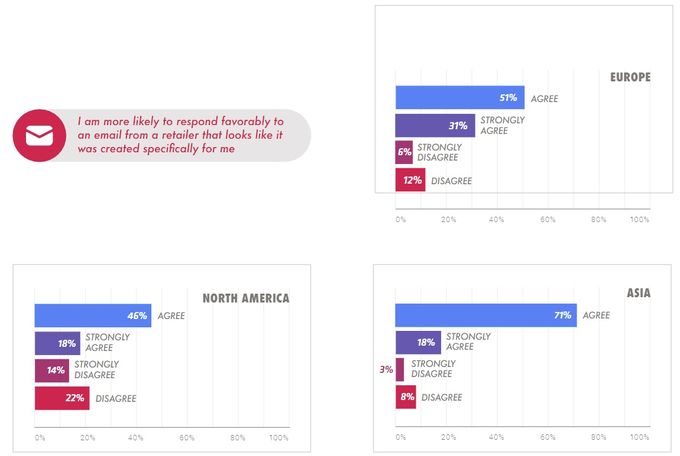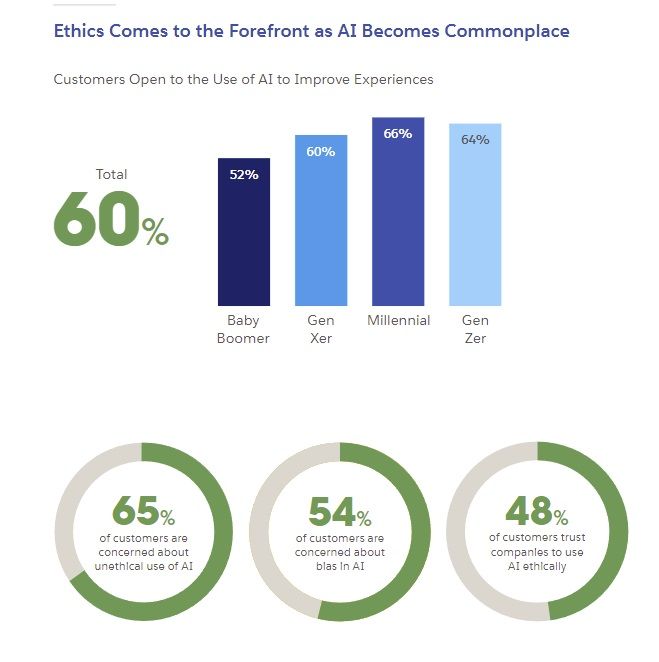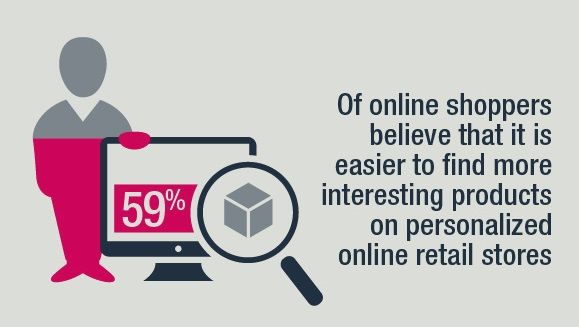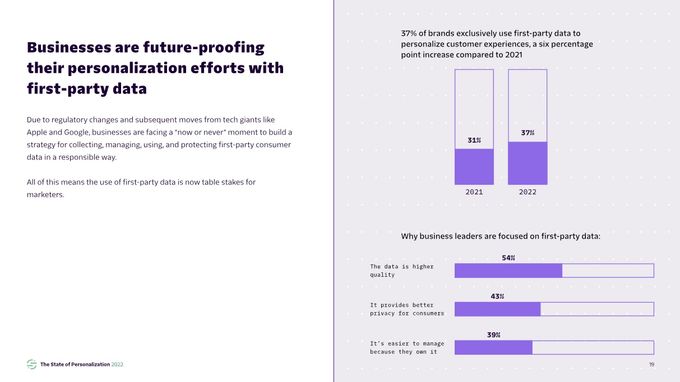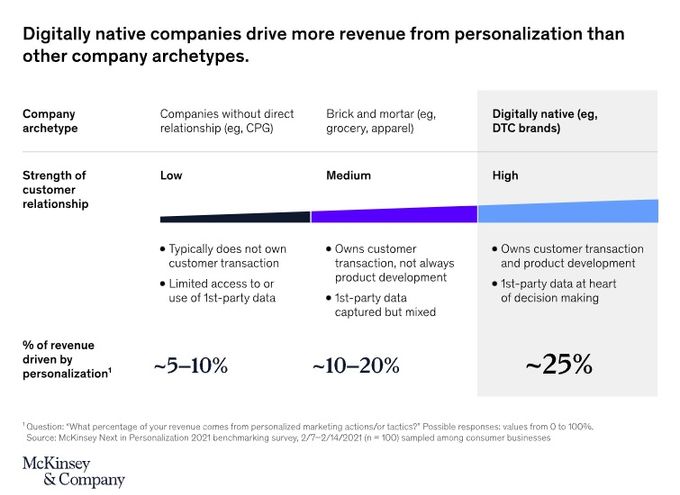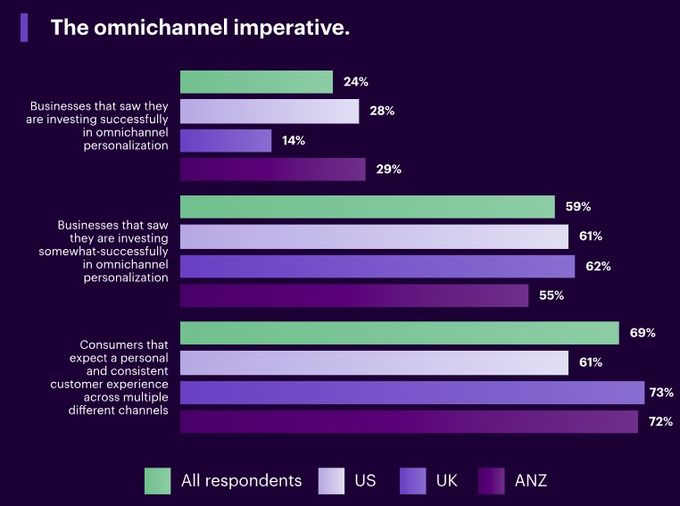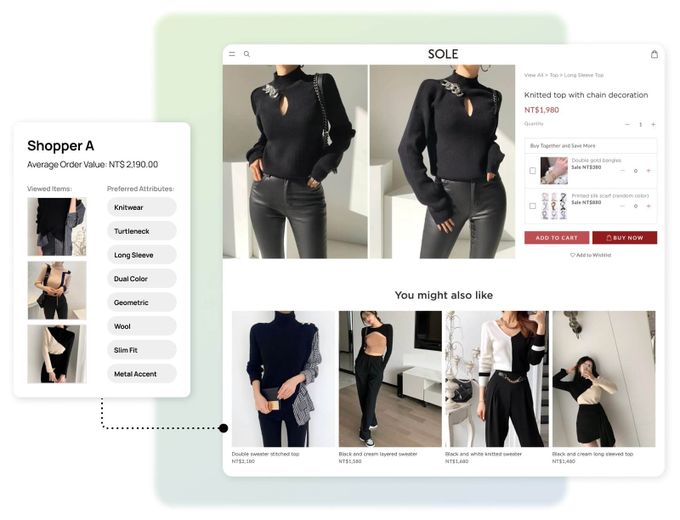7 Personalization Statistics You Need to Know in 2026
Personalization allows businesses to create delightful, memorable moments that foster deep emotional connections with customers.
Updated November 19, 2024

Shopping in 2026 is no longer a one-size-fits-all experience. Consumers demand a boutique level of personalization, where businesses anticipate their needs and desires before customers can add items to their virtual carts.
Leading brands have taken note, investing heavily in AI and data analytics to craft highly customized user journeys. But what does the data say about this eCommerce personalization revolution? Let's dive into the key statistics shaping eCommerce in 2026 and beyond.
1. Personalization and Email Marketing
Across the world, consumers are more likely to respond favorably to personalized emails that look as if they were created specifically for them.
This statistic shows that over half of consumers demand personalized discounts or promotions. This shift in customer expectations highlights the need for eCommerce businesses to implement the right personalization technologies while responsibly handling customer information.
Despite the challenges, personalized promotional email remarketing campaigns offer significant opportunities in several ways:
- Driving higher open and click-through rates
- Converting window shoppers to buyers
- Building loyalty
- Increasing revenue
The demand for personalized emails will continue to increase, and here's how you can fulfill these expectations:
- Prioritize leveraging big data capabilities
- Implement AI technologies
- Comply with evolving AI data privacy practices
2. Personalization and Customer Engagement
Across multiple age groups, from Baby Boomers to Gen Z'ers, customers are open to the use of AI to improve their experiences.
The rise in AI-driven interactions indicates a need for personalized engagement and efficient customer service in eCommerce businesses. In this context, AI offers opportunities for:
- Automating product recommendations
- Handling customer queries
- Generating insights on customer behavior for effective product strategies
As consumers get more comfortable with AI, businesses must prioritize data privacy and transparency while integrating AI systems into customer-facing interactions like virtual assistants and chatbots.
» Want to show results your customers care about? Check out our best searchandising strategies to grow your eCommerce business.
3. Personalization and Product Discovery
59% of online shoppers believe that personalized stores make finding interesting products easier.
This statistic suggests shoppers find personalized stores more intuitive and satisfying. However, it is crucial to balance personalized product recommendations to prevent overwhelming your customers and keep recommendations up to date with changing tastes.
Effective personalization with AI can enhance customer experiences and foster brand trust by demonstrating a deep understanding of individual preferences that shines through from landing pages to merchandising. With personalized product discovery becoming essential, businesses should start gathering and acting on customer insights to stay relevant.
Consider some of Fast Simon's solutions, which include visual search for product discovery and advanced site search that features autocomplete capabilities and allows users to quickly find what they are looking for.
4. First-Party Data for Personalization
37% of brands exclusively use first-party data for personalization.
First-party data is the information collected directly from customers. For smaller or newer stores, collecting enough data and making sense of it poses several challenges. Effective leveraging of data requires businesses to invest in robust data collection, analysis, and real-time application capabilities, such as customer relationship management (CRM) platforms.
Utilizing this data for personalization can foster trust and loyalty and create long-lasting customer relationships. Additionally, as privacy concerns increase, the reliance on first-party data will likely grow.
» Discover the importance of personalization in your eCommerce strategy using reviews
5. Personalization and Revenue Impact
Depending on the industry (from brick-and-mortar stores in all niches to exclusively digital brands), personalization drives between 5% and 25% of a company's total revenue.
This statistic emphasizes the importance of personalization in helping businesses meet individual customer needs, lift sales, and guide product development. However, personalization also presents challenges, such as the need to adapt quickly to new customer insights and the potential for inaccurate algorithms.
To overcome these challenges, businesses should invest in agile systems that can quickly adapt to individual customer preferences. By doing so, they can take advantage of the significant opportunities that personalization presents and meet the rising expectations of their customers.
6. Omnichannel Personalization
69% of consumers expect personalized and consistent customer experiences across multiple different channels.
This statistic highlights the necessity for eCommerce businesses to invest in omnichannel strategies, integrating various customer touchpoints—online, in-app, and social media—into a cohesive, personalized shopping journey. Failing to do so could mean falling behind in a competitive online retail environment.
Businesses face challenges seamlessly integrating customer data from multiple channels while delivering a personalized and consistent experience. However, this presents opportunities for improved customer loyalty and increased conversion rates.
Businesses must link customer journeys smoothly to create a personalized shopping adventure weaving through channels like social media and in-app purchases. Essentially, if you choose to create personalized customer journeys through multiple channels, you shouldn't neglect any of them. For example, don't invest in social media if you don't intend to optimize the mobile experience as a whole.
» The next step: Leverage omnichannel merchandising to accelerate your business growth
7. Personalized Messaging
72% of consumers say they now only engage with marketing messages tailored to their interests. Source: https://c.smarterhq.com/resources/Privacy-Personalization-Report.pdf
This eye-opening stat shows that nearly three-quarters of shoppers simply tune out generic, irrelevant communications. For eCommerce businesses, it's a resounding signal to revamp messaging strategies based on customer data.
Achieving unified messaging across different channels is a challenge that requires rigorous cross-functional teamwork. However, this creates an opportunity to stand out by infusing more human and individualized touches into their digital channels.
Meeting Evolving Customer Needs with Personalization
SOLE, a pioneering multi-brand boutique in Kaohsiung, Taiwan, implemented AI-driven, 1-to-1 personalized product recommendations and witnessed a remarkable 48% surge in sales, which led to an impressive 10% increase in incremental revenue. This striking example underscores the undeniable power of tailored shopping experiences.
The statistics are clear: personalization is no longer an option but an essential practice for e-commerce success. As customers demand tailored journeys, businesses neglecting personalization will undoubtedly fall behind competitors who prioritize memorable, data-driven personal touches.
To build long-term loyalty, brands must prioritize personalization by collecting data ethically and being transparent about how customer data is used and giving users control. This requires continuously evolving tactics to meet changing customer needs and expectations while preventing data privacy risks.

